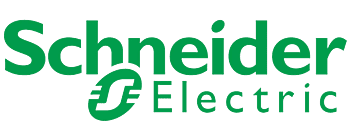In today’s workplace, nearly everyone complains at some stage of being “so busy.” Busyness is not just a full schedule, it’s the sense of being overwhelmed by demands. It erodes personal time, causes burnout, and creates workplace bureaucracy that lowers engagement and productivity (Ulrich, 2025).
In Australia, 61 per cent of workers report burnout, compared to 48 per cent globally, contributing to around 40 per cent of resignations and an estimated $14 billion in lost productivity annually (Thompson, 2025). Leaders may unintentionally contribute to this overload, but they also hold the key to addressing it.
Surprisingly as well, its reported 86% of remote working employees who work from home full-time experience burnout. (Thomson, 2025)
Shifting Mindset: Satisficing Over Perfection
Managing overload begins with resetting expectations. Herbert Simon’s concept of satisficing—settling for “good enough”, is often more productive than obsessively optimising every decision (Ulrich, 2025). Leaders should reserve deep analysis for high stakes issues and adopt a “go slow to go fast” mindset: invest more time where it counts, and less where it doesn’t. This helps reduce unnecessary busyness while enhancing decision quality.
Managing Time Wisely
Time is a leader’s most limited resource. Calculating the Return on Time Invested (ROTI) helps prioritise tasks by their value relative to time spent (Ulrich, 2025). Activities with little strategic value may not justify prolonged attention. Regular calendar audits are also effective. Reviewing how time is spent allows leaders to eliminate low value commitments and focus on what truly matters (Ulrich, 2025). Delegation is equally important. Leaders should identify which responsibilities only they can fulfil, such as final decisions or cultural leadership, and delegate the rest. This empowers teams and reduces personal overload (Ulrich, 2025).
Aligning Work with Values and Self-Care
Turning busyness into productivity also requires a focus on personal purpose and well-being. Leaders should ask themselves, “What do I want to be known for?” and then align tasks with those values (Ulrich, 2025). Tasks misaligned with core goals can be eliminated or delegated. Finally, prioritising self-care is essential. Whether through time with family, hobbies, or rest, consistent renewal is key to sustaining performance over time (Ulrich, 2025). A healthy leader is more productive, resilient, and better able to support others.
Conclusion
By adopting these habits, HR and operational leaders particularly in supply chain, manufacturing, and engineering, can transform chronic overload into focused impact. Dave Ulrich encourages a shift toward being “busy-literate,” where professionals can say, “I am busy and I am doing well” (Ulrich, 2025). This mindset promotes healthier workplaces and more effective leadership.
At Linq HR, we help organisations cut through workplace complexity, transforming busyness into focused performance through tailored HR and employee relations solutions. Ph 1300134566.
References
Thompson, L. (2025) Employee burnout statistics (Australia 2025). [online] Foremind. Available at: https://www.foremind.com.au/post/employee-burnout-statistics
Ulrich, D. (2025) How business and HR leaders turn busyness into healthy productivity. Human Capability Impact Newsletter, LinkedIn, 22 Oct. Available at: https://www.linkedin.com/newsletters/human-capability-impact-7041811620011905024/








